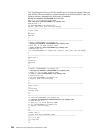
Table 28. MAPI Address Type Definitions (continued)
MAPI Address Type Preferred Address Format and Description
OFFICEVISION User ID/Address (for
individual directory
entries), or List ID and
List ID qualifier (for
distribution lists)
Format: <UUUUUUUU> <AAAAAAAA>
This type is also called the “SNADS address” or “DEN/DGN” by
some. From the system distribution directory, <UUUUUU> is the
User
field, and <AAAAAA> is the
Address
field. Both values can be
a maximum of eight characters long (and can be shorter than eight
characters). Neither <UUUUUU> nor <AAAAAA> can contain the
blank character. They must be separated by at least one blank
character. Leading and trailing blanks to the whole address should
be tolerated and ignored.
Examples:
MANDY SYSTEM1
LISA SYSTEM5
JAMIE GRADE5
ELYSE GRADE1
CALDWELJ SYSTEM2
AS400FAX Other preferred
address
(FAXTELNBR)
Format: <facsimile-telephone-number>
Within the system distribution directory, this is considered one of the
“Other” address types. (Set
Preferred address
to 4 (Other preferred
address).) The actual<facsimile-telephone-number> used as the
address is found in the system distribution directory
FAX telephone
number
. The address is a “dialing sequence”, including access code
sequences. It is expected to follow the rules for the Facsimile
Support for OS/400 LPP
telephone-number
.
1
Leading and trailing
blanks to the whole address should be tolerated or ignored.
Examples:
7525421
9=16077525421
8+8525421
*70/18005551212
Notes:
1. The
telephone number
, made up of dialing and control codes, is described in the
Facsimile Support for the
OS/400 Programmer’s Guide and Reference
, SC41-0572. See the detailed description of the SNDFAX command.
Also see the
Facsimile Support for OS/400 Installation Guide
, SC41-0570 for more information on creating FAX
entries in the system distribution directory.
The entries described in Table 28 on page 311 are built into an address book
cache that includes these address types and E-mail addresses as well as other
information from the system distribution directory.
The Address Book Cache
The POP server does not read the system distribution directory every time a client
requests something from it. Instead, a cache is built from the system distribution
directory entries and distribution lists. The POP server uses this cache to retrieve
address book data for clients.
The address book cache is built and maintained by the POP server when the
ADRBOOK parameter is set to *YES. The Refresh interval element of the
ADRBOOK parameter determines how often the address book is updated from the
system distribution directory. (See “Configuring POP for Client Access-Based Mail
Users” on page 294 for a description of the ADRBOOK parameter.)
312 OS/400 TCP/IP Configuration and Reference V4R4


















